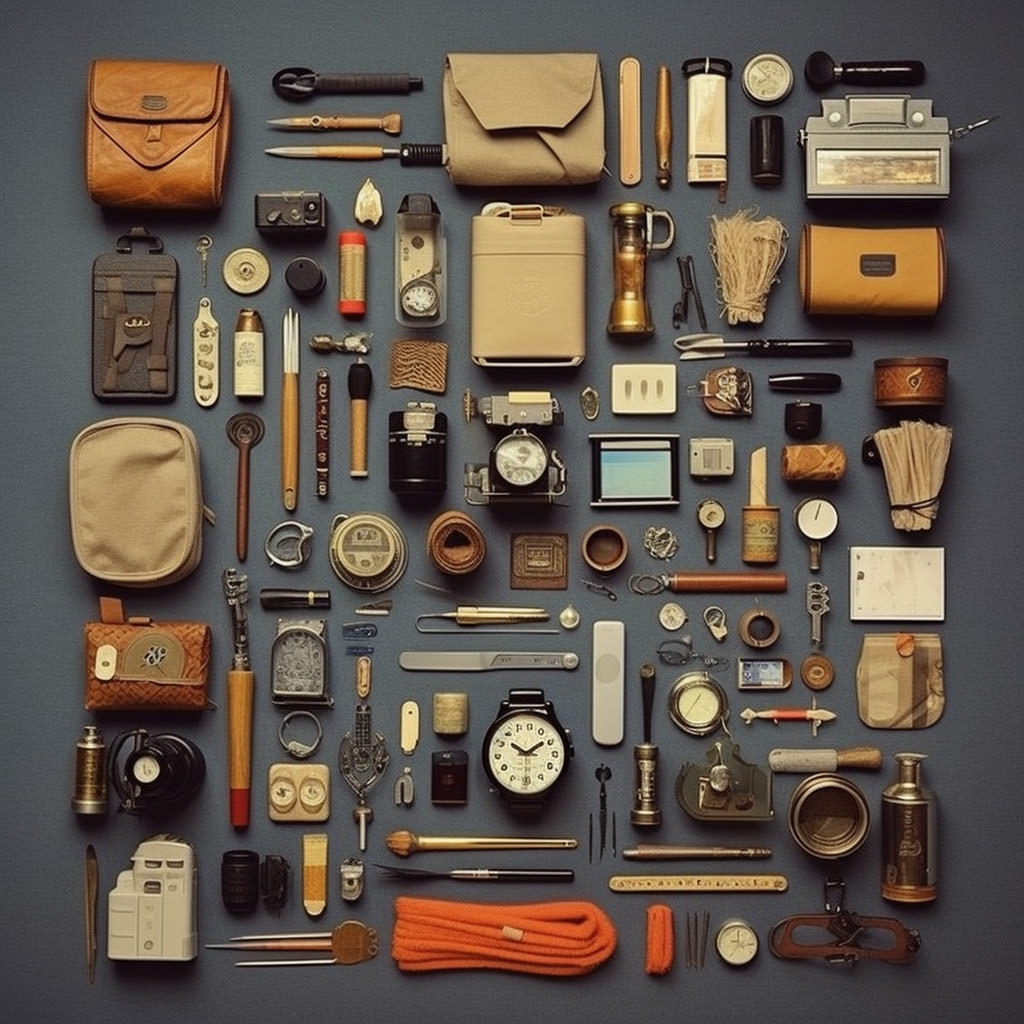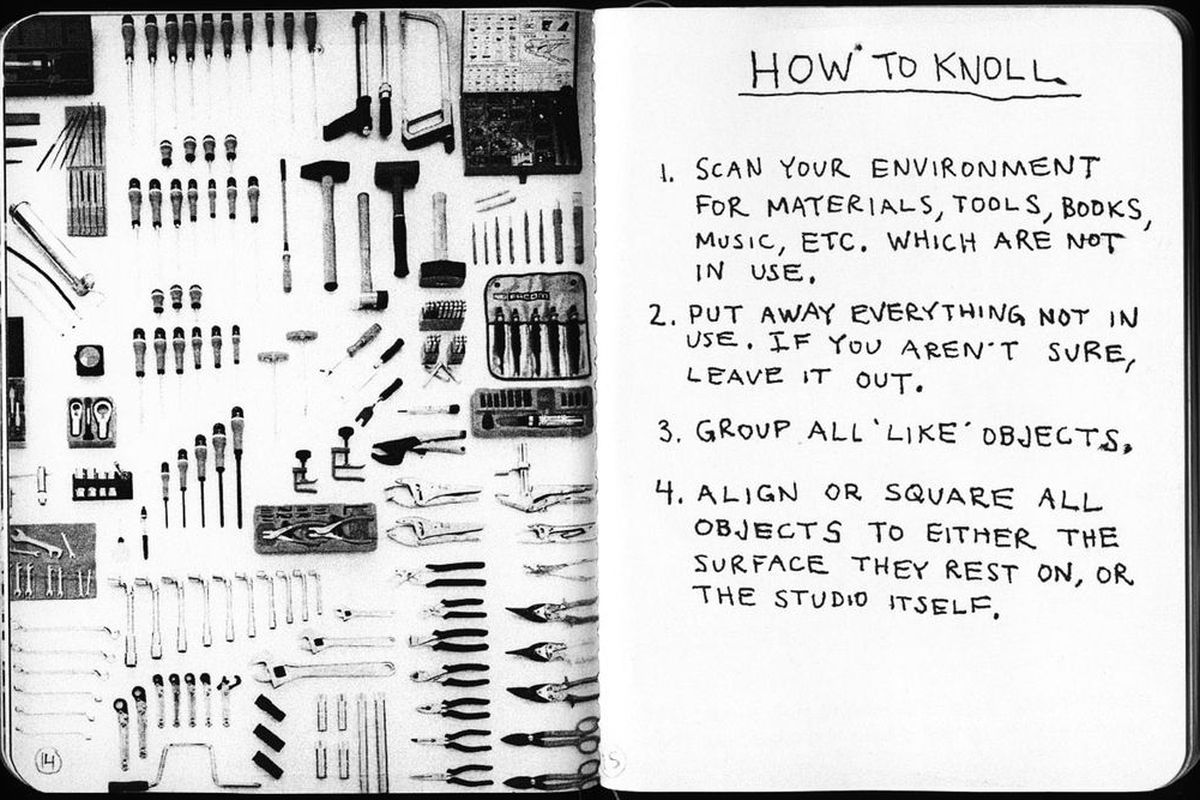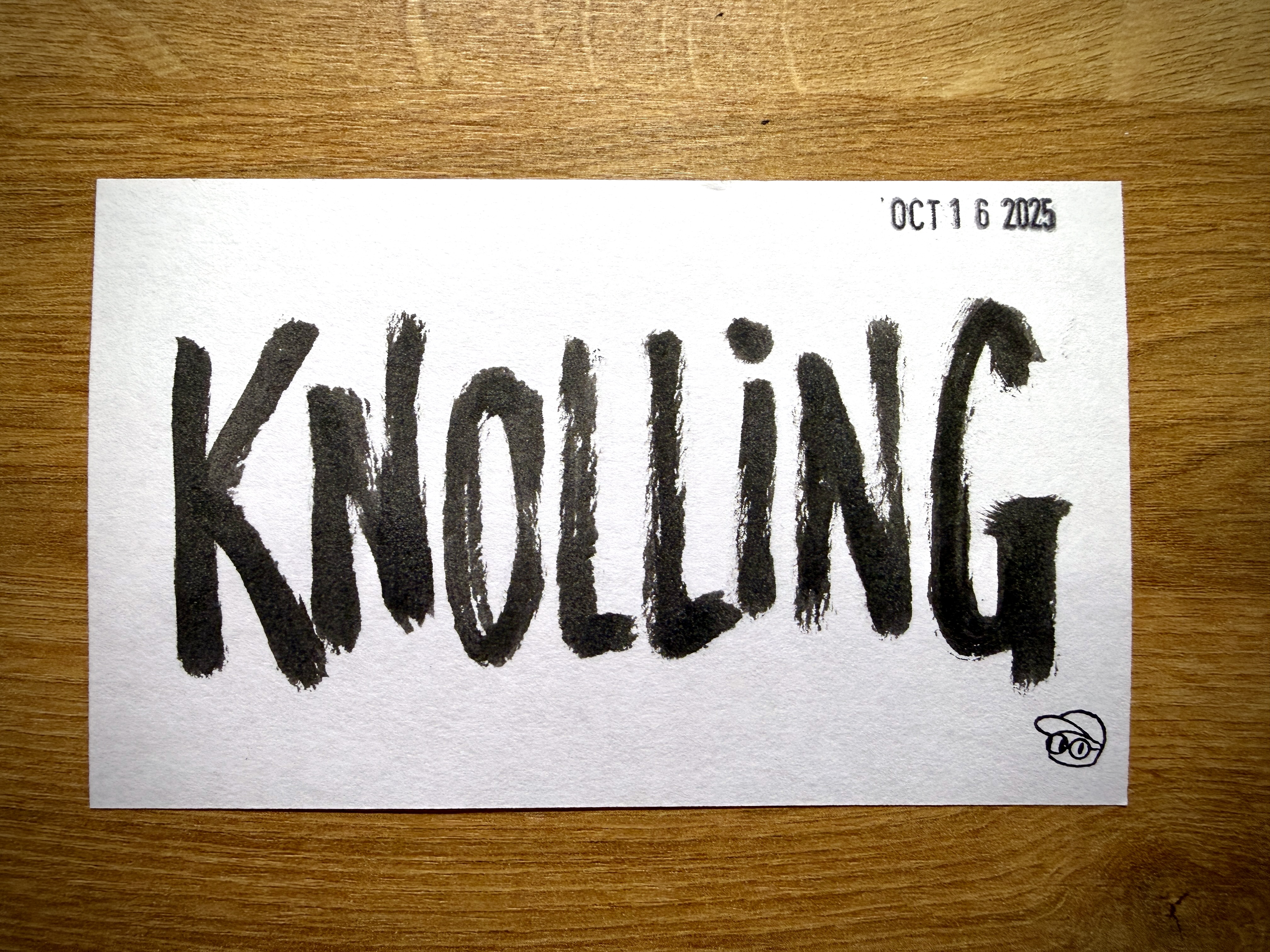Knolling. Maybe you’ve heard the term. You’ve definitely seen it.
It made its rounds during the early MidJourney craze — images of objects neatly spread out, flat, strangely satisfying, almost chaotic, but somehow… perfectly composed.
A geometry of wrenches, cables, pens, memory cards. Arranged like they’re about to be dissected by a museum curator.

This is knolling.
Savage
The first time I really learned what knolling was? From Adam Savage.
In his book, Every Tool Is A Hammer, there’s an entire segment dedicated to it. Not just as a way to tidy — but as a way to think.
Knolling, to him, was clarity. A ritual. A mindset.
A way to see everything, all at once — grouped with intention, laid flat, perfectly aligned, and suddenly understandable.
Straight lines. Right angles. A table transformed into a map of tools and ideas.
And then Adam mentioned a name...
"Tom Sachs".
Sachs
And that’s when I found it. Just a YouTube search away. Bullet #8: Always Be Knolling. Part of Tom Sachs’ 10 Bullets series — a field guide, an instruction manual, a mini manifesto on how makers can make.
This bullet. This series.
It’s hard to describe how transformative it was for me.
How it made sense out of nonsense. How it didn’t just acknowledge the mess — it embraced it. How beautifully imperfect the scrappy tools, materials, and surfaces were — and how right that felt.
Quiet precision. Hand made.
Q
Once you know this lineage — handmade and covered in plywood sawdust — it’s no surprise where my aesthetic and approach come from.
From how I lay things out on paper… To the not-so-subtle “Wall” behind me — The Design System of my Studio.
A vertical surface where my everyday tools live. A functional “art” piece that also doubles as my Zoom background.

Knolling isn’t just about making things look functionally pretty on some table somewhere.
To me, it’s a fundamental problem-solving technique. An everyday, (basically) every moment practice.
It’s about access. Seeing the pieces so you can move faster, decide clearer, build better.
It’s about spotting patterns.
About grouping things. About making stuff easier to understand for the next person who needs to interact with it.
It’s about making sense of the mess — so you can move.
It’s about acknowledging the overwhelm… and then choosing to do something about it.
It’s a daily discipline of asking: Where’s the noise? What belongs together? What can I remove?
Because sometimes clarity doesn’t come from thinking harder. It comes from looking differently. Laying everything out — and finally seeing it all. Top down. Straight lines. Right angles.
You
When your brain’s swirling with tabs and timelines… When your task list feels like a tangled ball of wires… When you’re stuck staring at a page with nothing left to say…
- Scan your materials, tools, books, etc... which are not in use.
- Put away everything not in use, if you are not sure leave it out.
- Group all 'like' objects.
- Align or square all objects to either the surface they rest on or the studio itself.
Make sense out of nonsense.
Always be knolling.

